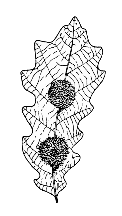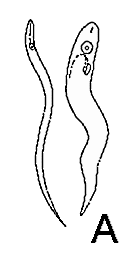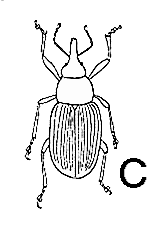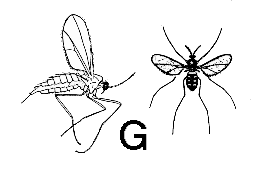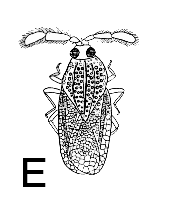Galls are “abnormal” structures that develop in the cells, tissues, or organs of a plant ONLY when it is colonized by certain parasitic organisms such as bacteria, fungi, nematodes, mites, or insects. These gall-makers are collectively known as cecidozoa. They usually secrete enzymes or plant hormones that stimulate hypertrophy (over-growth) and/or hyperplasy (cell proliferation) in their host plant. The resulting structures are quite distinctive and highly species-specific. 
Color photos of Common Galls
Cecidozoa – The Gall Makers
Many types of organisms are capable of producing galls. Examples include:
- A. Nematodes (phylum Aschelminthes)
- B. Mites (class Acarina)
- C. Beetles (order Coleoptera)
- D. Psyllids (order Homoptera)
- E. True bugs (order Hemiptera)
- F. Wasps (order Hymenoptera)
- G. Flies (order Diptera)
Cecidocole Communities
A plant gall may be the center of a whole group of living organisms that interact with one another as a tiny ecological community. In addition to the host plant and the gall-maker, this microcosm may include inquilines who live with the gall-maker, cecidophags who feed on the gall tissue, and sucessori who move into the gall and use it for shelter after the gall-maker moves out. In addition, there may be predators and parasites of the gall-maker, the inquilines, the cecidophags, and the sucessori. The predators and parasites may even have their own hyperparasites! All of these animals are part of an interrelated food web — a cecidocole community.

